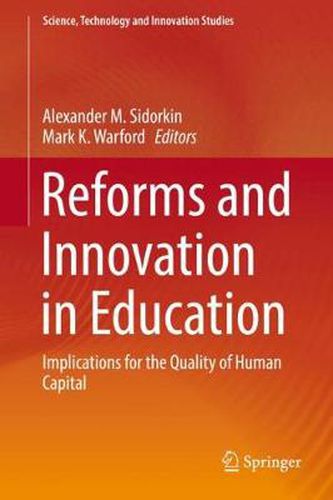Readings Newsletter
Become a Readings Member to make your shopping experience even easier.
Sign in or sign up for free!
You’re not far away from qualifying for FREE standard shipping within Australia
You’ve qualified for FREE standard shipping within Australia
The cart is loading…






This title is printed to order. This book may have been self-published. If so, we cannot guarantee the quality of the content. In the main most books will have gone through the editing process however some may not. We therefore suggest that you be aware of this before ordering this book. If in doubt check either the author or publisher’s details as we are unable to accept any returns unless they are faulty. Please contact us if you have any questions.
This book investigates the interrelationship between educational reforms and pedagogical and technological innovations, as well as the implications of this relationship for the quality of human capital. By analyzing recent educational reforms in Russia and the US, the authors shed new light on how these reforms may help or hinder innovations, such as the introduction of computer technologies into classrooms, new methods of teacher evaluation, constructivist teaching methods, and governance in public schools.
Taking labor economics as a useful lens for conceptualizing the diffusion of innovation, in the first part of the book the authors analyze book how certain power arrangements can block educational innovations in schools. In the second part they examine recent educational reforms in the US and Russia. The final part presents a vision of the next generation of educational reforms, which may enable innovation diffusion, rather than hamper it.
$9.00 standard shipping within Australia
FREE standard shipping within Australia for orders over $100.00
Express & International shipping calculated at checkout
This title is printed to order. This book may have been self-published. If so, we cannot guarantee the quality of the content. In the main most books will have gone through the editing process however some may not. We therefore suggest that you be aware of this before ordering this book. If in doubt check either the author or publisher’s details as we are unable to accept any returns unless they are faulty. Please contact us if you have any questions.
This book investigates the interrelationship between educational reforms and pedagogical and technological innovations, as well as the implications of this relationship for the quality of human capital. By analyzing recent educational reforms in Russia and the US, the authors shed new light on how these reforms may help or hinder innovations, such as the introduction of computer technologies into classrooms, new methods of teacher evaluation, constructivist teaching methods, and governance in public schools.
Taking labor economics as a useful lens for conceptualizing the diffusion of innovation, in the first part of the book the authors analyze book how certain power arrangements can block educational innovations in schools. In the second part they examine recent educational reforms in the US and Russia. The final part presents a vision of the next generation of educational reforms, which may enable innovation diffusion, rather than hamper it.